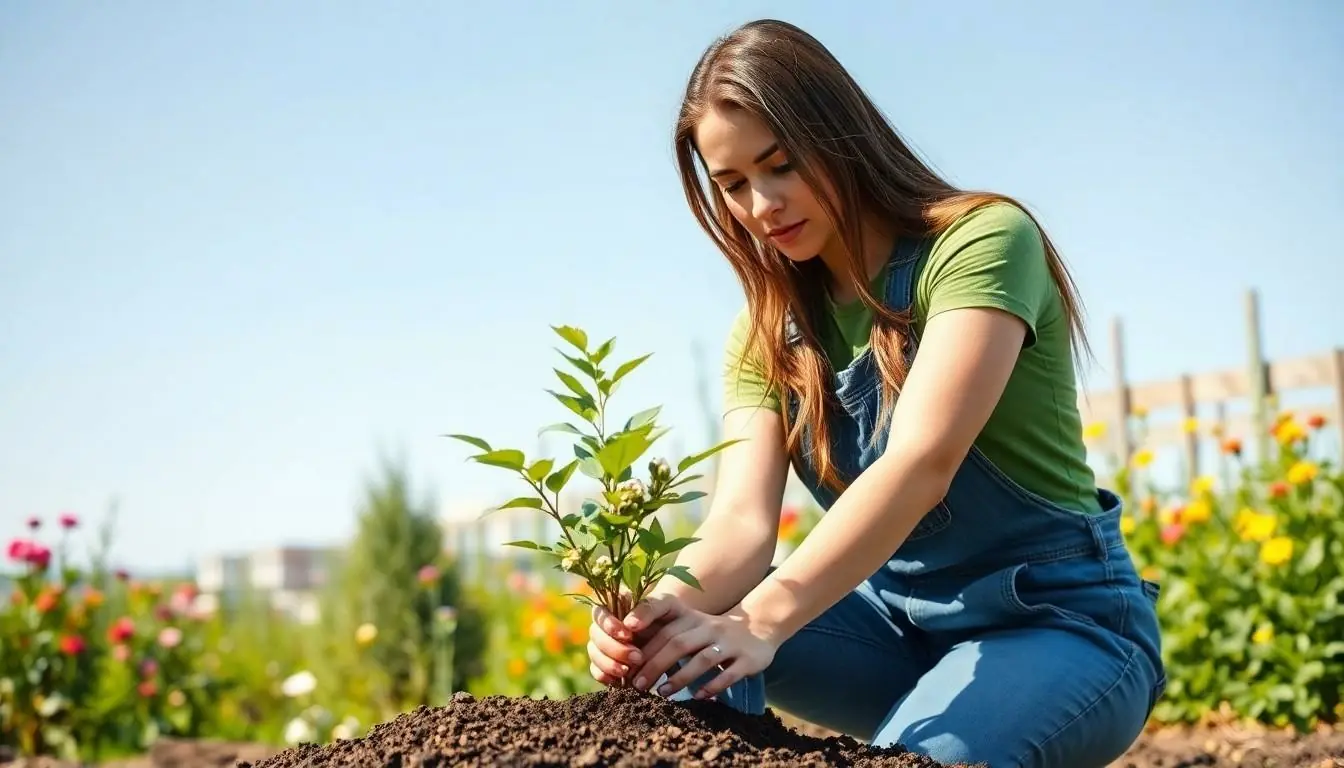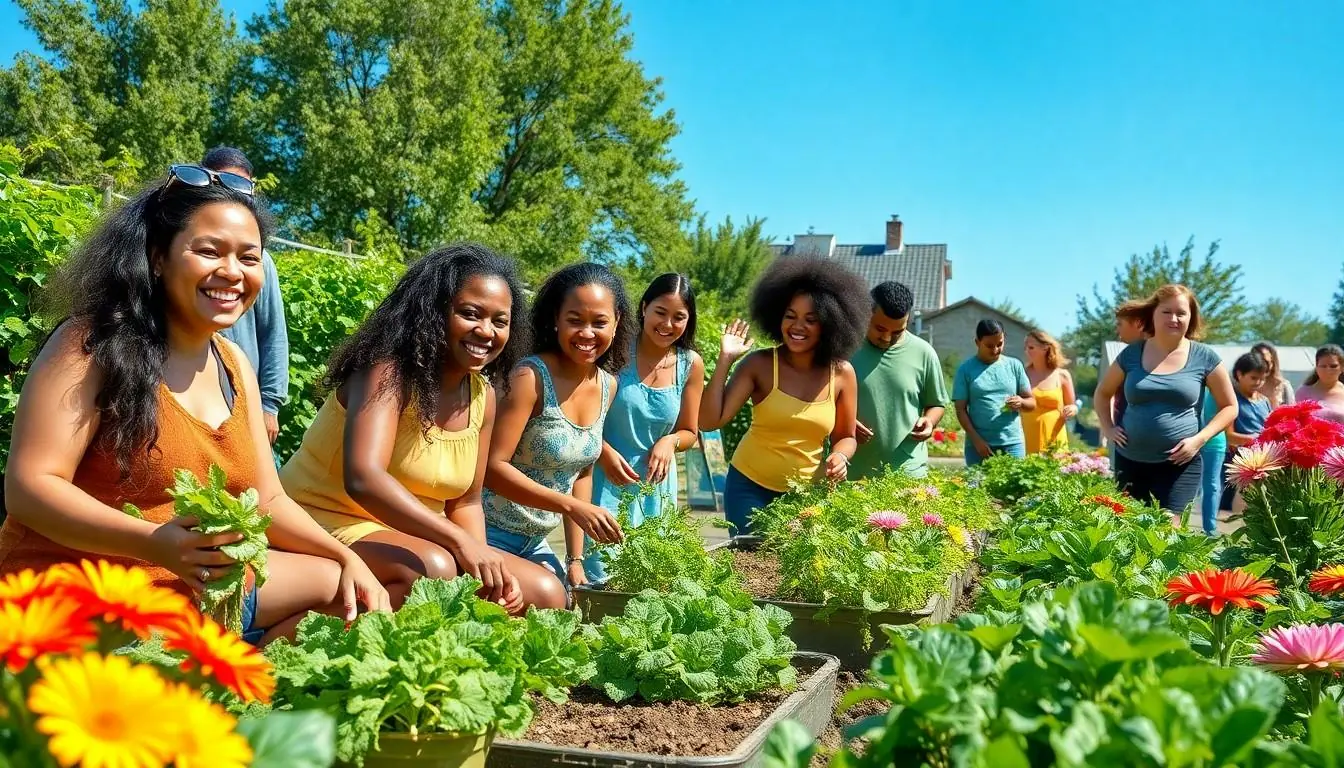Table of Contents
ToggleImagine waking up every morning to the sound of chirping birds instead of blaring alarms, sipping coffee brewed from your own homegrown beans, and knowing your carbon footprint is smaller than your neighbor’s dog. Self-sustainable living isn’t just a trend; it’s a lifestyle that transforms homes into eco-friendly havens.
In a world where convenience often trumps conscious choices, embracing sustainability can feel like a daunting task. But fear not! With a sprinkle of creativity and a dash of determination, anyone can cultivate a self-sufficient lifestyle. From backyard gardens to solar panels, the possibilities are as endless as your neighbor’s unsolicited advice on lawn care. Dive into the world of self-sustainable living and discover how to make green choices that are good for the planet—and even better for your peace of mind.
Understanding Self Sustainable Living
Self-sustainable living involves creating a lifestyle that meets personal needs without compromising future generations’ ability to meet theirs. This approach requires an understanding of eco-friendly practices and principles.
Definition and Key Principles
Self-sustainable living focuses on self-sufficiency using methods that minimize environmental impact. Emphasis on renewable resources, like solar energy, plays a crucial role. Practical applications include organic gardening and rainwater harvesting. Efficient use of energy and waste reduction are also fundamental concepts. People engaging in this lifestyle prioritize local sourcing and community engagement for improved resilience.
Importance of Self Sustainable Living
Choosing self-sustainable living benefits the environment significantly by reducing carbon footprints. Its impact extends to enhancing food security through localized production. Health improvements result from consuming organic produce free of harmful chemicals. Financial savings emerge with reduced reliance on commercial resources. Community building fosters connections among individuals united for a common purpose. Transitioning to this lifestyle promotes long-term ecological balance and personal fulfillment.
Benefits of Self Sustainable Living

Self-sustainable living offers numerous advantages that enhance both individual lifestyles and the environment. The focus remains on ecological benefits alongside economic gains.
Environmental Impact
Self-sustainable living significantly lowers carbon emissions. Implementing renewable energy sources like solar or wind reduces dependency on fossil fuels. Organic gardening practices promote biodiversity, leading to healthier ecosystems. Growing food at home cuts transportation needs, decreasing fossil fuel usage. Utilizing rainwater harvesting conserves water and protects local water sources. All these practices contribute to a cleaner environment and promote long-term ecological balance.
Economic Advantages
Financial savings play a critical role in self-sustainable living. Reduced reliance on commercial products cuts household expenses. Growing food at home also lowers grocery bills while providing fresh produce. Investing in renewable energy can lead to lower utility costs over time. Engaging in local trading fosters community connections and circulates funds within the neighborhood. These economic benefits illustrate how self-sustainable living not only protects the environment but also supports financial health.
Practical Steps to Achieve Self Sustainable Living
Achieving self-sustainable living involves actionable steps that yield significant benefits for individuals and the environment. Below are essential practices to foster a more sustainable lifestyle.
Starting a Home Garden
Starting a home garden provides fresh produce and reduces the carbon footprint associated with food transportation. Choosing a variety of vegetables and herbs ensures diversity in the diet. Home gardeners benefit from organic practices by avoiding harmful pesticides and fertilizers. Creating a compost system encourages soil health and reduces kitchen waste. Utilizing vertical gardening techniques maximizes space, especially in urban settings. Regular maintenance and seasonal planting foster a rewarding gardening experience.
Utilizing Renewable Energy Sources
Utilizing renewable energy sources effectively decreases dependency on fossil fuels. Solar panels serve as a popular option for homeowners looking to harness natural energy. Generating electricity from sunlight lowers utility costs and minimizes environmental impact. Wind turbines also prove advantageous for areas with consistent wind patterns. Investing in energy-efficient appliances amplifies energy savings while maintaining comfort. Embracing these alternative energy sources contributes to a sustainable lifestyle.
Reducing Waste and Recycling
Reducing waste and recycling materials plays a crucial role in achieving self-sustainability. Implementing a composting system diverts organic waste from landfills and enriches the garden. Opting for reusable bags and containers reduces single-use plastic consumption. Participating in local recycling programs ensures valuable resources are repurposed rather than discarded. Focusing on mindful consumption discourages wasteful habits and fosters a culture of sustainability. Establishing these practices maintains an efficient waste-management system.
Challenges of Self Sustainable Living
Adopting a self-sustainable lifestyle presents several challenges that individuals may encounter. Addressing these obstacles is essential for a successful transition to sustainability.
Initial Costs and Investments
Initial costs can deter individuals from pursuing self-sustainable living. Setting up a solar energy system typically requires a substantial financial commitment, often ranging between $15,000 and $25,000, depending on household needs. Establishing a home garden also incurs upfront expenses for seeds, soil, and tools. Some people may hesitate to spend money on these investments without immediate returns. However, long-term savings on utility bills and groceries often justify these initial expenditures, making them worthwhile. Individuals often discover that taking incremental steps helps lower risks associated with larger investments.
Time and Commitment Required
Time and commitment play crucial roles in achieving self-sustainable living. Starting a garden requires regular attention, including planting, watering, and weeding throughout the growing season. Individuals may spend several hours each week on these tasks, especially during peak growing periods. Additionally, the learning curve for managing renewable energy systems can be steep; familiarizing oneself with maintenance and troubleshooting techniques takes time. Engaging in local food production also requires a mental shift towards prioritizing sustainability over convenience. With dedication, individuals often find they develop rewarding habits that foster self-sufficiency and environmental stewardship.
Embracing self-sustainable living opens doors to a healthier lifestyle and a cleaner environment. By taking small yet impactful steps toward self-sufficiency, individuals can enjoy the rewards of homegrown produce and a reduced carbon footprint.
The journey may have its challenges but the benefits far outweigh the initial hurdles. With creativity determination and a commitment to eco-friendly practices, anyone can contribute to a more sustainable future.
Ultimately, self-sustainable living not only enriches personal well-being but also fosters a sense of community and responsibility toward the planet. It’s a lifestyle choice that paves the way for a brighter future for generations to come.







